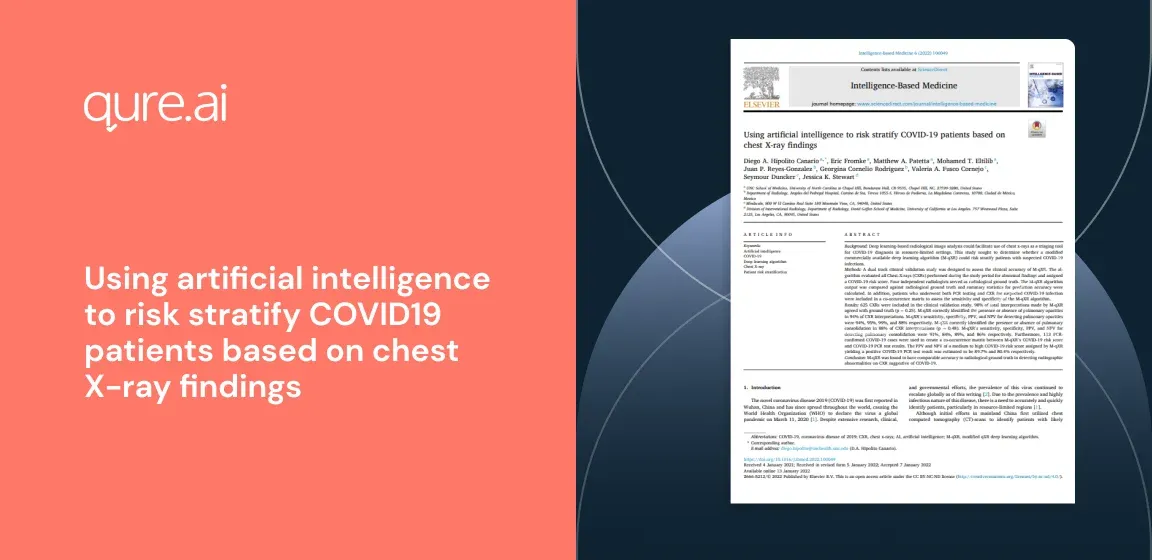Deep learning-based radiological image analysis could facilitate use of chest x-rays as a triaging tool for COVID-19 diagnosis in resource-limited settings. This study sought to determine whether a modified commercially available deep learning algorithm (M-qXR) could risk stratify patients with suspected COVID-19 infections.
A dual track clinical validation study was designed to assess the clinical accuracy of M-qXR. The algorithm evaluated all Chest-X-rays (CXRs) performed during the study period for abnormal findings and assigned a COVID-19 risk score. Four independent radiologists served as radiological ground truth. The M-qXR algorithm output was compared against radiological ground truth and summary statistics for prediction accuracy were calculated. In addition, patients who underwent both PCR testing and CXR for suspected COVID-19 infection were included in a co-occurrence matrix to assess the sensitivity and specificity of the M-qXR algorithm.
625 CXRs were included in the clinical validation study. 98% of total interpretations made by M-qXR agreed with ground truth (p = 0.25). M-qXR correctly identified the presence or absence of pulmonary opacities in 94% of CXR interpretations. M-qXR’s sensitivity, specificity, PPV, and NPV for detecting pulmonary opacities were 94%, 95%, 99%, and 88% respectively. M-qXR correctly identified the presence or absence of pulmonary consolidation in 88% of CXR interpretations (p = 0.48). M-qXR’s sensitivity, specificity, PPV, and NPV for detecting pulmonary consolidation were 91%, 84%, 89%, and 86% respectively. Furthermore, 113 PCR-confirmed COVID-19 cases were used to create a co-occurrence matrix between M-qXR’s COVID-19 risk score and COVID-19 PCR test results. The PPV and NPV of a medium to high COVID-19 risk score assigned by M-qXR yielding a positive COVID-19 PCR test result was estimated to be 89.7% and 80.4% respectively.
M-qXR was found to have comparable accuracy to radiological ground truth in detecting radiographic abnormalities on CXR suggestive of COVID-19.
